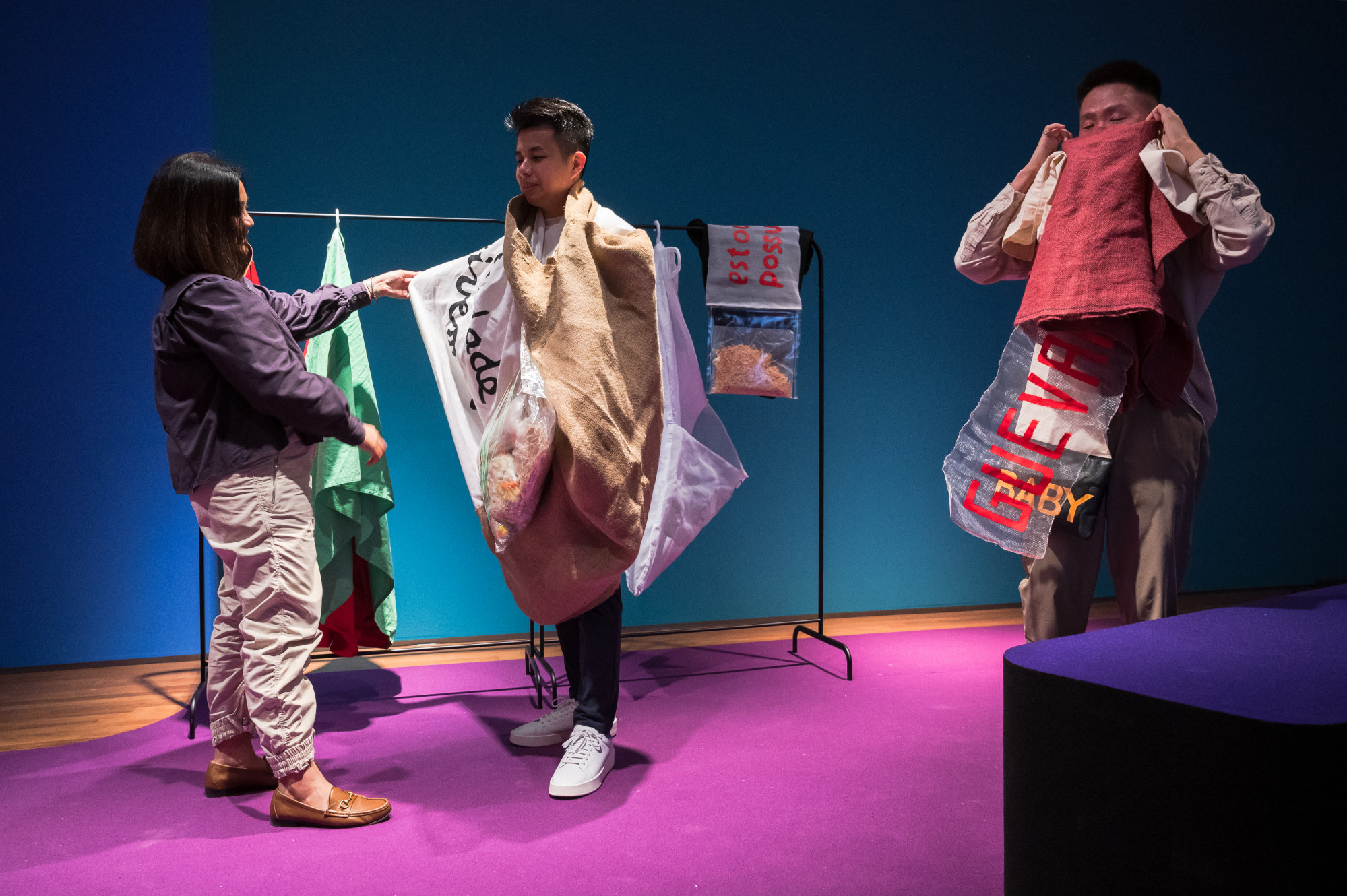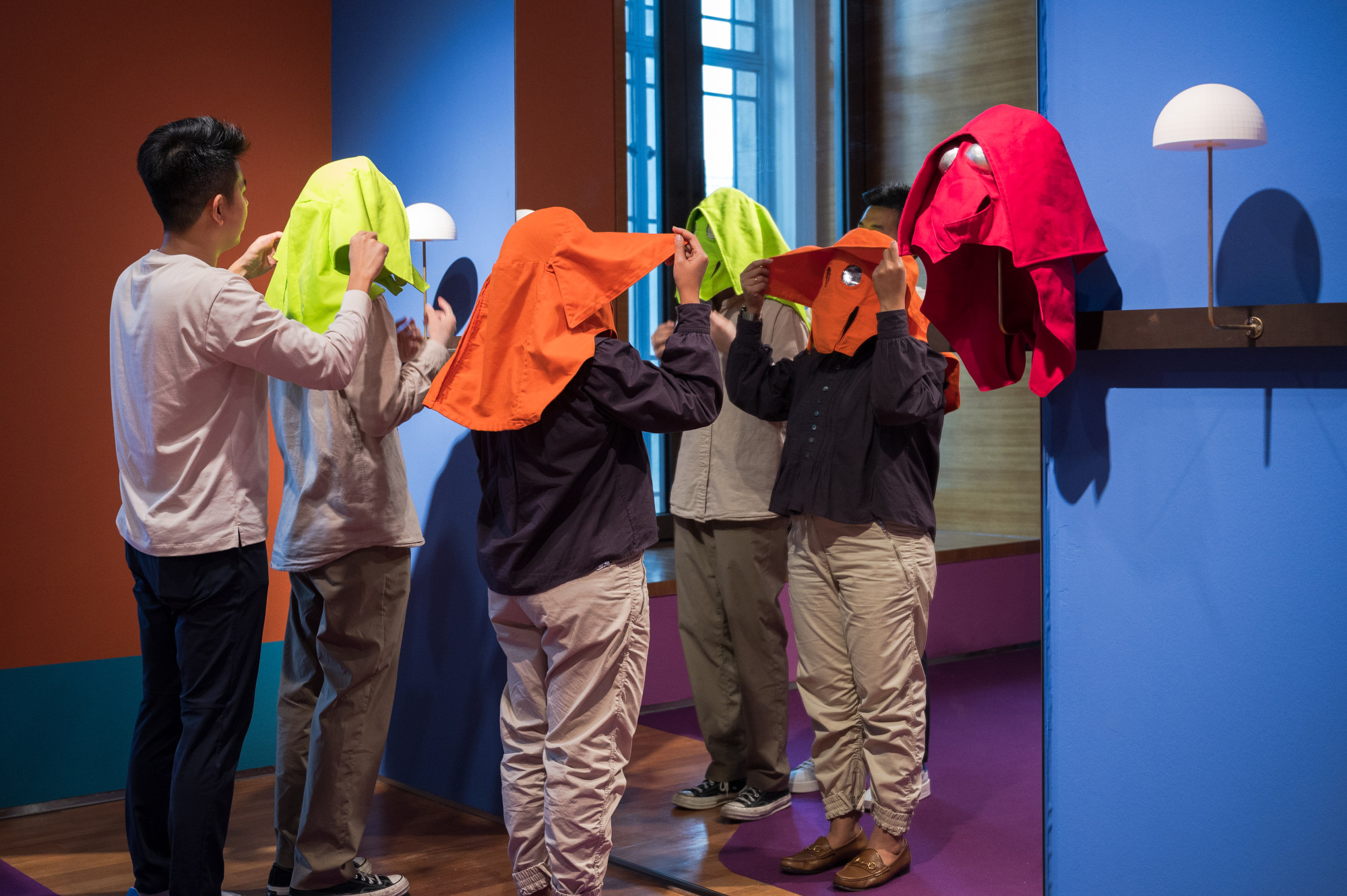“When you say tropical, you start imagining banana trees, ‘natives’ in the sun living the good life and the exotic, but no – it is much more than that,” says Shabbir Hussain Mustafa, senior curator at the National Gallery Singapore and Singapore Art Museum.
“It can become a site for self-determination. This is the grand plot of this exhibition.”

According to Mustafa, the idea of the “tropical” has been an empowering, even defiant attitude adopted by both Latin American and Southeast Asian artists throughout the 20th century. They saw the tropical as a consciousness, a space to dream and build another world, he says.
The exhibition unites more than 200 works – paintings, sculptures, installations and performative pieces – by 23 artists from Latin America and 52 artists from Southeast Asia under this compelling yet elusive theme. Spanning the late 19th century to the present day, the works on view also include pieces from Bangladesh, Sri Lanka and Australia.
Warhol, Picasso, Monet and more in Nanjing museum’s show of confidence
Warhol, Picasso, Monet and more in Nanjing museum’s show of confidence
The show unfolds across three sections titled after texts by artists and thinkers. The opening gallery for instance, “The Myth of the Lazy Native”, is named after Malaysian academic Syed Hussein Alatas’ influential book that critiques colonial prejudices.
In this section, many paintings sit in free-standing “crystal easels”, two thick planes of glass wedged into recycled wood levers in concrete blocks in the centre of the room. This was inspired by Brazilian modernist architect Lina Bo Bardi’s radical idea from the 1960s to liberate paintings from the walls.
Among the first works we see is French painter Paul Gaugain’s 1896 work Pobre Pescador (Poor Fisherman), depicting a languid Tahitian man. Surrounding paintings challenge this orientalist image of indolence by depicting active scenes of labour, often featuring women.

Similarities in aesthetics and subject matter between artists from both regions are immediately visible. Mexican muralist Diego Rievera’s La Molendera (Woman Grinding Maize), a 1924 painting that shows a monumental female figure making tortillas, is juxtaposed against Filipino muralists Victorio C. Edades, Galo B. Ocampo and Carlos “Botong” Francisco’s 1935 painting Mother Nature’s Bounty Harvest, depicting strong women harvesting crops.
Interspersed among the artworks are large banners with fervent anti-colonial manifestos that provide valuable insight into the artistic climate of the time. In one powerful text, Victorio C. Edades implores fellow artists to have “pride and self-confidence” and stop making colonial-style paintings of “pretty girls and namby-pamby men”.


The second gallery, “This Earth of Mankind”, recreates another one of Bo Bardi’s experimental display structures. Viewers enter an immersive scaffolding-like structure with works mounted on old timber salvaged from Singapore’s Jurong Shipyard.
Striking paintings such as Frida Kahlo’s Self-Portrait with Monkey (1945) are hung beside Malaysian artist Patrick Ng Kah Onn’s powerful Self Portrait (1958) showing the artist dressed as a woman wearing batik, representing a reclamation of agency and a celebration of indigenous culture common to both regions.

While this gallery is filled with fascinating works, ranging from a hulking wood mother-and-child sculpture by Indonesian artist Semsar Siahaan to a moody portrait of a shaman embracing birds-of-paradise by female Indonesian modernist Emiria Sunassa, the experience is slightly overwhelming.
Mustafa says the curatorial team wanted to “create an absolute density” of work to demonstrate connections between both regions. But such a diverse array of visuals – each with its own rich backstory and context – has a diluting effect.
Ahead of the works in the final gallery, titled “The Subversive”, viewers encounter a series of sculptural capes by Oiticica that he called Parangolés.

Originally created starting from 1964, these were remade in 2023. Among the most compelling works on view, they provide viewers with some breathing room in the otherwise packed show. Visitors can slip on these “habitable paintings” including an electric blue felt cape reading “Capa da Liberdade”(Cape of Liberty) and one that reads “Estou possuido” (I am possessed).
In 1965, when Oiticica took his friends from a favela (a slum in Brazil) donning the Parangolés to visit a museum in Rio, they were banned from entry, so they stayed outside and danced.
“There was always a tension between this work and institutional ways of showing art at the time,” says Cesar Oiticica Filho, the artist’s nephew, who explains the works were inspired by homeless people. “It’s Hélio’s most radical experiment.”

While about 70 per cent of the works on view are from Southeast Asian artists, it’s the Latin American artists who steal the show.
Alongside Oiticica’s work, Brazilian artist Lygia Clark’s works also stand out. Viewers can try on her Máscaras sensoriais (Sensorial Masks), made in 1967 – including a thick red cotton canvas mask with eyeholes covered by shiny shell-like cups filled with the pungent smell of cloves – and reflect on ideas of perception, consciousness and identity.

The show culminates in a series of contemporary works in a darkened room. Highlights include veteran Thai artist Montien Boonma’s Black Stupa (1989), monumental stacked paintings made of soil, charcoal and rice grains on paper; and Filipino artist David Medalla’s Sand Machine-Blue Bamboo Batangas (1963-2019), a rotating sculpture of sea shells dangling from copper wires etching circular patterns into a bed of sand, which are repeatedly erased, in a meditation on time and memory.
While the idea of exploring connections within two important regions in the global south is invaluable, this exhibition is too ambitious.
Including both modern and contemporary art in a single show has its merits – offering context and providing a strong narrative arc – but it’s difficult to do justice to the work in either time period.

The curators were successful in reactivating pieces from the museum’s permanent collection, allowing visitors to make new discoveries and resurrecting Bo Bardi’s radical museology. It also features loans from an impressive number of major institutions in the Philippines, Brazil, Mexico, Malaysia, Indonesia and Australia.
But the show was overstuffed. Instead of leaving satisfied, one departs feeling both too full and somehow still slightly hungry for a deeper exploration of the Latin American art on view.
“Tropical”, Level 3, Singtel Special Exhibition Gallery, City Hall Wing, National Gallery Singapore. Until March 24, 2024.

